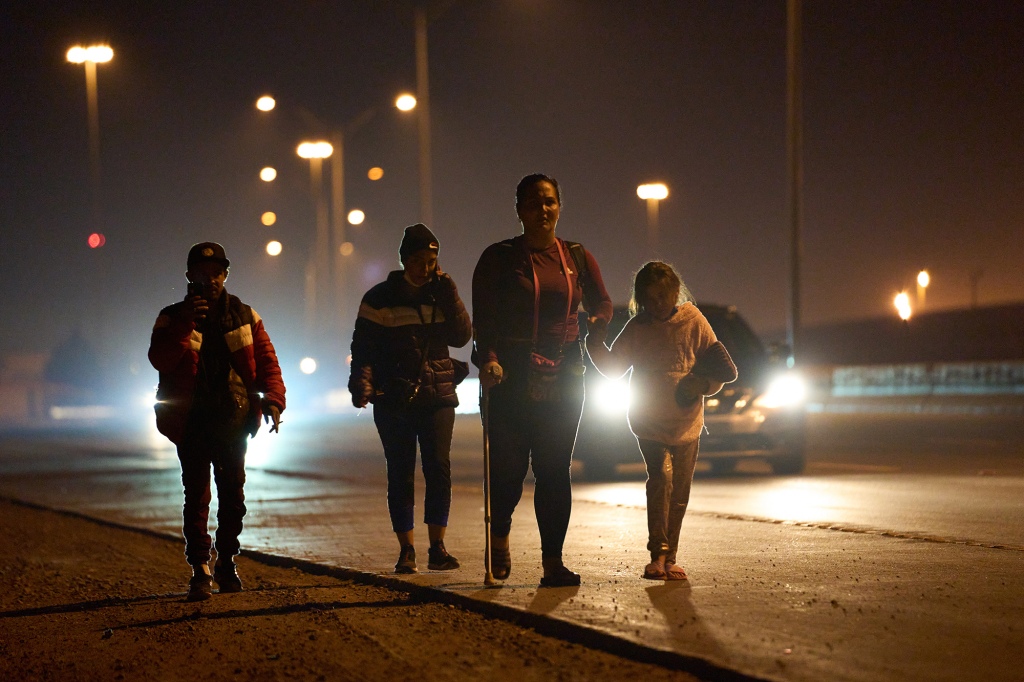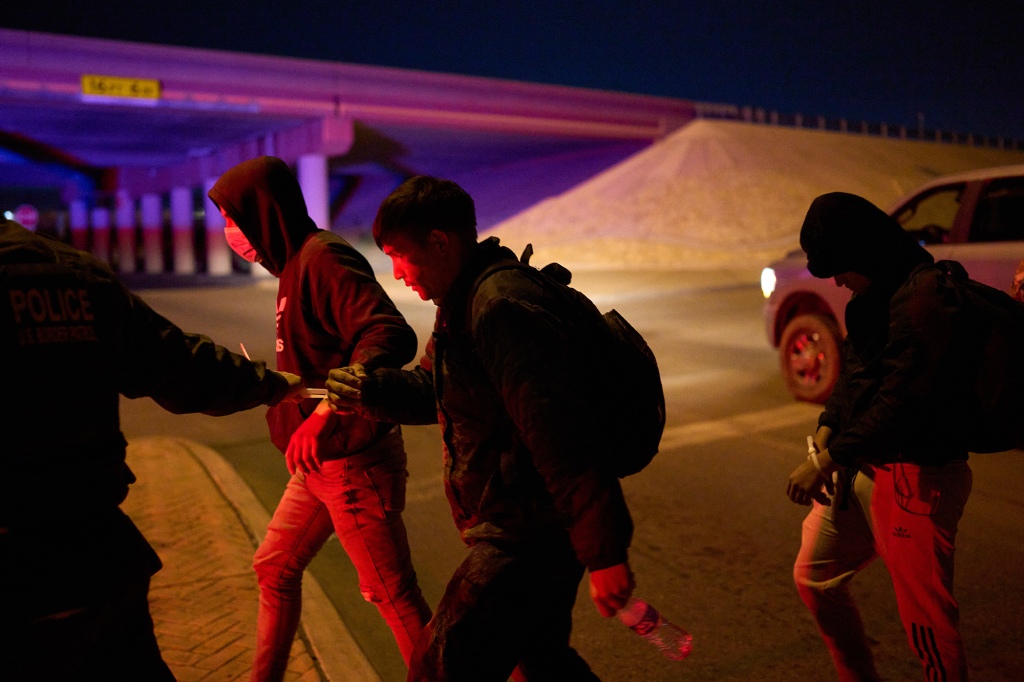‘Most’ asylum seekers suffer from PTSD, doctors say
As a surge of asylum seekers overwhelm southern border cities, “most” of the migrants are suffering from post-traumatic stress disorder from their harrowing trip into the US.
The migrants’ arduous ordeals are often marred with violence, kidnappings and sexual assaults, according to Dr. Brian Elmore, who volunteers for weekend shifts at a shelter in El Paso, Texas.
“Most of our patients have symptoms of PTSD. I want to initiate a screening for every patient,” said Elmore, an emergency medicine doctor at Clinica Hope.
In many cases, the grueling hardships had been exacerbated by the pandemic emergency measure Title 42, which has been used to expel more than 2.5 million migrants from the US since March 2020, according to the Saturday report by the Associated Press.
The order was set to expire several days before Christmas, prompting the current border surge. However, the US Supreme Court last week ordered it to remain in effect while legal challenges from 19 Republican-led states played out.
As cities like El Paso grapple with overflowing shelters and public safety concerns, much needed mental health resources are scarce and only the most severe trauma cases can be addressed, experts said.
“Like a pregnant 13-year-old who fled gang rapes, and so needs help with child care and middle school,” said Zury Reyes Borrero, a case manager in Arizona with the Center for Victims of Torture, who visited that girl when she gave birth.
“We get people at their most vulnerable. Some don’t even realize they’re in the US.”
Reyes Borrero and a colleague had come to the aid of about 100 migrants at Catholic Community Services’ Casa Alitas shelter in Tucson, which received about 700 people a day last month.
Trying to develop enough trust and a rapport with the traumatized migrants to empower them takes a lot of time and patience, and each visit can take hours, according to Reyes Borrero.
“This is not a community that we talk babbling brook with. … They might not have any memory that’s safe,” said Sarah Howell, the director of a clinical practice and a nonprofit treating migrant survivors of torture in Houston.

Many new patients introduce Howell to relatives or neighbors who are also suffering from severe trauma but are not stable enough for effective treatment, she said.
“The estimated level of need is at least five times higher than we support,” said Leonce Byimana, director of US clinical services for the Center for Victims of Torture, which operates clinics in Arizona and two other states.
The trauma experienced by migrants is typically two-fold: they are suffering from the memories they left behind while also carrying around mental anguish from their journeys, Byimana explained.
In addition to emergency “first-aid mental health,” patients need long-term care that is logistically difficult as they move from border city shelters to sanctuary locations around the states.

If the conditions are left untreated, they may escalate into a psychiatric situation, which demands a higher level of professional resources, according to Hope Border Institute Executive Director Dylan Corbett.
The US branch of the global Catholic refugee agency Jesuit Refugee Service had planned to deploy more resources to El Paso in the coming weeks to assist new arrivals, many of whom are pregnant women and girls who are victims of violence, officials said.
With advocacy resources spread so thin, many victims of organized crime and political violence had been left to fend for themselves as medical professionals focused on treating abused women and their unborn children.
The most dangerous part of the journey from South America to the US is the undeveloped Panamanian and Colombian Darien Gap jungle that separates the continents, service providers say.
In addition to deadly snakes and treacherous rivers, the Gap, known as la selva, or jungle in Spanish, is also rife with bandits who prey on migrants that are crossing the dangerous area in increasing numbers to escape Venezuela, Cuba and Haiti.
Migrants from the Caribbean nations are welcome to apply for asylum in the US as long as they arrive by land, not sea — and many have made the long journey after flying to South America.
In 2022, the number of migrants arriving from Venezuela, Cuba and Haiti eclipsed those coming from Central America’s Northern Triangle of Guatemala, Honduras and El Salvador, which had previously made up the lion share of the migrant population, along with those looking to escape Mexico.
Loreta Salgado was months into her circuitous journey from Cuba — which is only about 90 miles from the US — when she crossed the perilous continental divide some three thousand miles away from Texas.
“We saw many dead, we saw people who were robbed, people who were raped. We saw that,” the emotional woman said while staying in a migrant shelter in El Paso a few days before Christmas.
Other women questioned about their ordeals revealed they had volunteered to be raped by guerillas to save their daughters from the same fate, or were sexually assaulted while their husbands were forced to watch.
“I don’t think it’s the first rape that most women I’ve talked to have experienced. But it’s the most violent and the most shameful, because it was in front of other people,” said Howell.
Forensic evidence taken from rape victims at the border are often instrumental in their bids for a new life in the US. Asylum is often granted to women who are victimized by high levels of systemic violence, but the cases can linger in court for years.
There is a current backlog of 1.5 million people seeking asylum in US immigration court, even as millions were recently expelled, according to Syracuse University’s Transactional Records Access Clearinghouse.
The long road to a legal resolution often added to the trauma suffered by many.
“There’s a different tension and fear in faces than I’ve seen before,” said Howell. “They don’t know how to stop running.”
With Post wires
Read the full article Here


